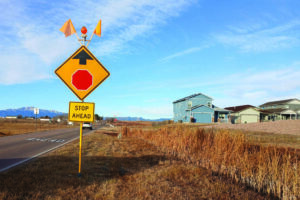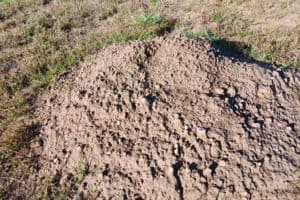Want to give a cat a home ó and a job as well?You could adopt a barn cat from the Humane Society of the Pikes Peak Region.I imagine cats have been welcome on farms as a form of rodent control as long as there have been farms. In our case, we have two barn cats that adopted us. Milton and Buddy Bud came from a feral cat colony managed by neighbor Shirley. We think they might be brothers, but we’re not sure. They went from occasional visitors to a constant presence in our barn, so we now feed and shelter them; they, in return, keep the barn, and thus the grain, free of mice.The Humane Society has different classifications of barn cats, from social cats that prefer the outdoor life, to social but feisty (they may, for example, be prone to biting), to more feral cats that are definitely not on the cuddly side.”Some barn cats are incredibly social and love human companionship, but they may not prefer the strictly indoor life and theyíve shown incredible hunting ability ó which many people want,” explained Ami Manivong, the Humane Society’s feline population coordinator, via email. “We also have barn cats who would prefer to do their job, stay warm in your barn, and love you from a distance. Theyíre typically undersocialized and have limited experience with human touch.”There are no adoption fees for the barn cats, though there is a $20 license fee per cat for those adopted by people in the Colorado Springs city limits. The adoption process begins with a questionnaire.”The purpose of the questionnaire is for us to know when a customer specifically wants a barn cat as opposed to someone just looking for a house cat,î Manivong said. ìThis also allows staff to reach out to customers directly as soon as weíre able. Weíve found that this process is more personalized and helps the cats get adopted quicker. At the time of contact, we email an information sheet about how to acclimate barn cats to their new environment ó patience during the acclimation period is vital because cats are so tied to their environments whether that be inside a traditional home, workshop, tack room or barn. We also provide a current list of available barn cats so adopters can see if anyone we have might fit their needs. We remain in contact with many adopters who have questions, concerns or just want to pass along how well their barn cats are doing with their hunting skills (weíve been known to have fantastic vole hunters)!”When getting a barn cat, Manivong continued, “It is best to confine them with food, water, a bed, and a litter box for 10 to 21 days in the building you would like them to live and work in. If the cats cannot run free in the building, then confining the cats to a large dog crate will be necessary. If you release the cats prior to allowing them to adjust to their new environment, the cats may run off in search of a better environment (food, hiding places, etc.)”A few years ago, I wrote about feral cats and indoor/outdoor cats. (We strive to keep our cats indoors, but acknowledge that one has indeed become free-roaming). That article drew a couple of angry emails, one all the way from Anchorage, Alaska, from a fisheries biologist.”Arrogant, self-entitled ‘pet’-worshippers feel it’s their right to inflict their invasive, disease-ridden pet vermin on their neighbors and on native wildlife,” he complained, citing studies that have shown the toll outdoor cat populations exact on birds and other wildlife.Fair enough. That’s certainly a compelling argument for keeping domesticated cats indoors, though I would challenge the characterization of cats as “disease-ridden vermin.” (The safety of the cat itself is also enhanced by keeping it inside; the outdoors offers such threats as cars, loose dogs and coyotes.) But the letter writer also complained about 84.5 million stray and feral cats in the U.S. ñ and in that case, I see programs like our neighbor’s managed cat colony, where all the cats have been spayed or neutered, and the Humane Society’s barn cat program as helping solve that problem, not adding to it.”This adoption avenue is a way to give these special cats a chance to live their lives in environments that allow them to be non-toxic hunters,” Manivong said. “I believe itís about cats AND birds, not birds or cats. I think we can respect the environments of both. Many people believe that removing outdoor cats will solve the problem, but we will never depopulate the world of cats. If you remove one cat from the area, another cat will simply move in. I think keeping owned cats indoors will help reduce the number of cats living outside; microchipping and putting collars on indoor cats can help lost cats reunite with their owners sooner, which gets them off the streets. Spaying and neutering outdoor cats can help birds by making the cats less active and reducing their need for roaming. I also think the harm that humans cause the planet is much more detrimental to wildlife.”





